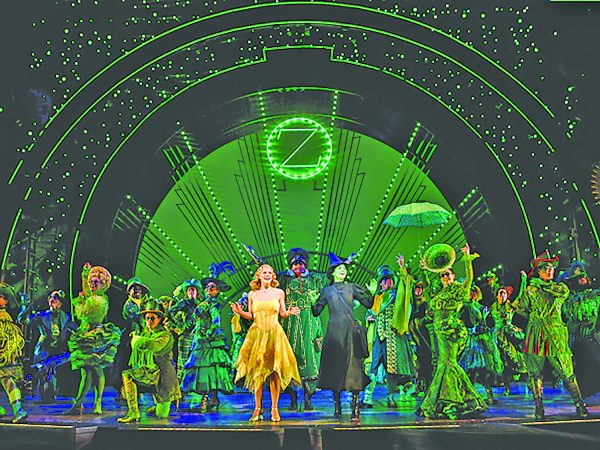Look out! It’s Spider-Man!
Over the course of the past decade, the Marvel Cinematic Universe (MCU) has become a cultural phenomenon across the globe. Since “Iron Man” premiered in 2008, Marvel Studios has dominated the movie industry, averaging around $873 million in worldwide box office revenue from the 20 superhero films released thus far. Their success has permeated other mediums as well, including television series and mobile games.
But as popular as the MCU has become, one area that they have been unable to conquer is the realm of video games. Developers have attempted to convert Marvel blockbusters and Marvel Comics into console games dozens of times, and they’ve all ranged from colossal flops to niche games that only diehard fans enjoy.
However, Marvel’s latest videogame venture has put a decisive end to their seemingly endless sequence of failures.
“Spider-Man” was released exclusively for the Sony PlayStation 4 on September 7 and immediately cemented itself as the preeminent game of Marvel Entertainment, shattering several sales records in the process. 3.3 million copies were purchased in the first three days, the most ever for a Marvel-branded videogame, as well as a Sony exclusive. In addition, it grossed $81 million more than “Spider-Man: Homecoming” (the most recent film based on the titular character) did during its opening weekend.
Developed by Insomniac Games, “Spider-Man” is an open-world action-adventure game that tells an entirely new story, free from the tethers of any previous videogame, movie or comic book. Played from the third-person perspective, it takes place in modern-day New York City, as is customary with the franchise.
Through that third-person lens, you are in control of a very advanced Spider-Man. At 23 years of age, he is eight years removed from the incident in which he was bitten by the genetically-modified spider through which he gained his powers. He is incredibly adept at fighting crime, but, as most superheroes do, constantly struggles to find balance between heroism and his regular life as Peter Parker the research assistant.
A single-player only game, “Spider-Man’s” campaign is relatively short, and can be completed in approximately 20 hours if you only do the main missions in sequential order. But if one wishes to attain 100 percent completion, it would take much longer, as there are various side missions, mini events and tasks that arise throughout the city.
The story begins with you defeating the notorious kingpin of crime, Wilson Fisk, who Spider-Man has been trying to put behind bars for years. But what Spidey doesn’t realize is that Fisk was the only person who could keep all of the other villains and crime syndicates in check, and his absence creates a power vacuum, sending New York City into all-out chaos. As you fight to restore order, with the aid of your now ex-girlfriend Mary Jane Watson and NYPD Chief Yuri Watanabe, you find yourself immersed in an amalgam of previous “Spider-Man” plots. Nearly every supervillain that has existed in our hero’s canon is capable of making an appearance, often teaming up as the war for supremacy of the city wages on.
Admittedly, when I first started playing the game, I wasn’t immediately hooked, but a large part of that had to do with how unique “Spider-Man” is in the current console generation. The majority of open-world action-adventure games utilize looting as a primary feature. This means that after defeating an enemy, you can pick up and use weapons and items they have left behind. To the contrary, Spider-Man only uses the gadgets he has created, which left me feeling weak and vulnerable in the early hours of gameplay.
Fortunately, Insomniac Games compensates for the lack of looting with a rich array of the aforementioned gadgets, as well as skills, modifications and powerups which are unlockable as you progress through the campaign. As you level up, you are also able to unlock and wear every suit that Spider-Man has ever donned during his different iterations across various mediums since the character was created by Stan Lee.
Although the plot is thoroughly enthralling, the game’s mechanics are where “Spider-Man” truly shines. The combat, especially once you have unlocked a few skills and pieces of tech, promotes innovation in how you opt to neutralize attackers. You’re encouraged to combine numerous aerial moves, spider sense reflexes, finishing moves and web shooting devices to subdue them. But what stands out even more are the web-slinging and swinging mechanics and parkour Spider-Man uses to traverse the map. Every death-defying movement is so incredibly fluid and gratifying that I frequently avoid using fast travel, which is something I had never previously done in a videogame.
My sole complaint about the game is the open-world. Granted it is a very accurate facsimile of New York City, an area which doesn’t lend itself to a lot of developer creativity. However, it’s difficult to tell which district you’re swinging around and diving through, because they have such similar building structures and landscapes.
All in all, “Spider-Man” is a truly exceptional videogame, regardless of the past struggles of Marvel and the superhero genre as a whole. Given the popularity and critical acclaim (aggregate rating of 87 out of 100 from 111 critics), let’s hope developers use it as a template for how to approach these games moving forward.









